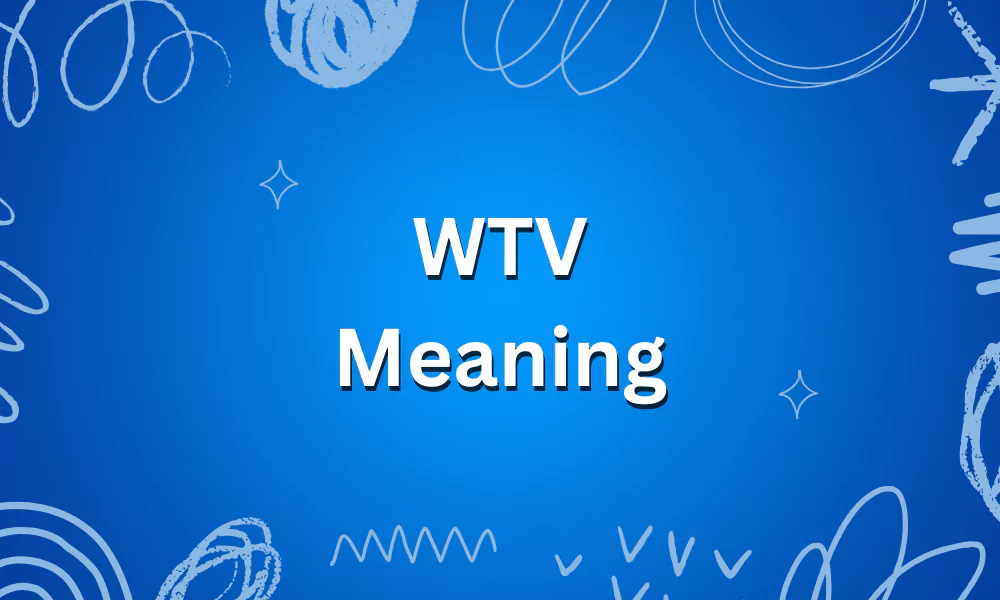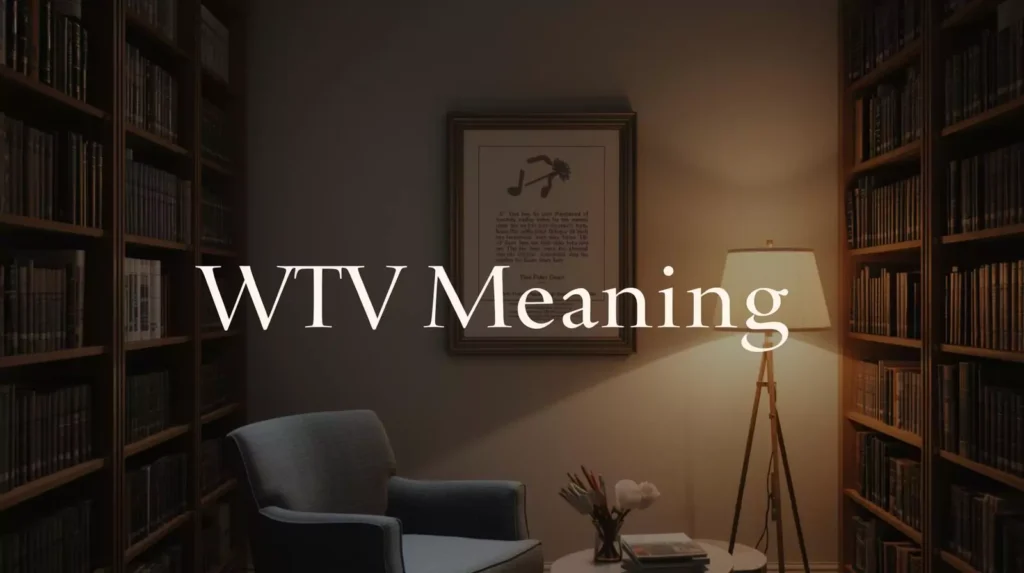WTV Meaning: What Does WTV Stand For in Texting and Social Media?

In today’s fast-paced world of texting and social media, acronyms and abbreviations make conversations quicker and trendier. One popular shorthand you’ve probably come across is WTV. But what does “WTV” mean in text? For most people, it’s simply a casual way of saying “whatever”. However, depending on context, WTV can also take on other interpretations, like “What’s the view?” or a playful expression used among friends. Whether you’re shrugging off a suggestion, responding to someone’s message, or just trying to keep up with digital slang, knowing the meaning of WTV can help you understand and use it effectively in everyday chats.
What Does WTV Mean?
WTV is an abbreviation most commonly used to mean “whatever.” It’s a casual, shorthand way of dismissing a statement, showing indifference, or signaling that something isn’t a big deal. In some contexts, people also use WTV to mean “What’s the view?” or as a playful phrase among friends. Its meaning usually depends on the tone of the conversation and the platform where it’s used.

Origins and Evolution of WTV
The use of WTV traces back to the rise of online chatrooms and text messaging, where users wanted quicker ways to type common words. Over time, it became a trendy abbreviation in everyday texting, particularly with younger generations who embraced internet slang. From a simple substitute for “whatever” to a versatile slang term with multiple meanings, WTV has evolved into a staple of modern digital communication.
WTV on Snapchat and Social Media
On platforms like Snapchat, Instagram, and TikTok, WTV is widely used in casual conversations and captions. A user might reply “WTV” to shrug off a message, or they might use it in a fun way to ask “What’s the view?” in the context of sharing photos or videos. Its short, stylish nature makes it popular among teens and young adults who want to keep chats quick and expressive.
How to Use WTV
In Casual Chats
In one-on-one conversations, WTV is often used as a quick reply to show indifference or to move the conversation along. For example, if a friend asks where to eat and you don’t mind, replying “WTV” keeps things simple.
In Group Conversations
In group chats, WTV can be a way to stay neutral when multiple people are deciding something. It communicates that you’re fine with any option without adding extra messages.
In Gaming Communities
Gamers often use WTV during live chats or streams to downplay mistakes, dismiss banter, or show they’re not bothered by an outcome. It keeps the tone light and casual in competitive environments.
When To Use WTV
Use WTV when you want to sound casual, laid-back, or indifferent. It works well in friendly conversations, quick replies, or when you don’t have a strong opinion about a choice.
When Not To Use WTV
Avoid using WTV in professional or formal settings, as it can come across as dismissive or rude. It’s also best not to use it in sensitive conversations, since it may make the other person feel like you don’t care about their feelings or perspective.
Is WTV Polite or Rude?
Whether WTV comes across as polite or rude depends on the tone and context. In lighthearted chats, it’s usually seen as casual and harmless. But in serious conversations, it may feel dismissive, as if you don’t care about the other person’s opinion. The key is knowing your audience and using it only when it won’t be misinterpreted.

Examples of WTV in Conversations
In Texting
- Friend 1: “Where do you want to order food from?”
- Friend 2: “WTV, I’m good with anything.”
In Social Posts
- Instagram caption: “Friday night vibes… WTV happens, happens”
- Snapchat story: “Just chilling, WTV.”
In Everyday Dialogue
Although mostly typed, some people say “WTV” out loud as slang, especially among close friends. For example:
- Friend 1: “Do you care if we watch this movie instead?”
- Friend 2: “WTV, it’s fine.”
Read: WTD Meaning
Alternatives and Synonyms for WTV
| Alternative | Tone/Context | When to Use |
|---|---|---|
| IDC (I Don’t Care) | Direct, casual | When you truly don’t mind, but don’t want to sound polite. |
| Whatevs | Playful, lighthearted | In friendly chats when you want to sound casual or fun. |
| It’s all good | Relaxed, positive | When you want to reassure or keep things chill. |
| I’m flexible | Polite, professional | In workplace or formal settings when you want to show adaptability. |
| Either works | Neutral, polite | When making plans or choices without sounding dismissive. |
| Your call | Respectful, agreeable | When you want to let the other person decide. |
FAQs
Conclusion
In the world of fast digital communication, abbreviations like WTV make conversations shorter, trendier, and more expressive. While it most commonly means “whatever,” it can also be used in playful ways such as “What’s the view?” depending on context. The key to using WTV effectively is understanding tone, situation, and audience, since it can sound casual and chill in friendly chats but dismissive in serious ones. Whether you’re texting friends, posting on social media, or chatting in gaming communities, knowing how and when to use WTV helps you stay on top of modern slang and communicate with ease.
